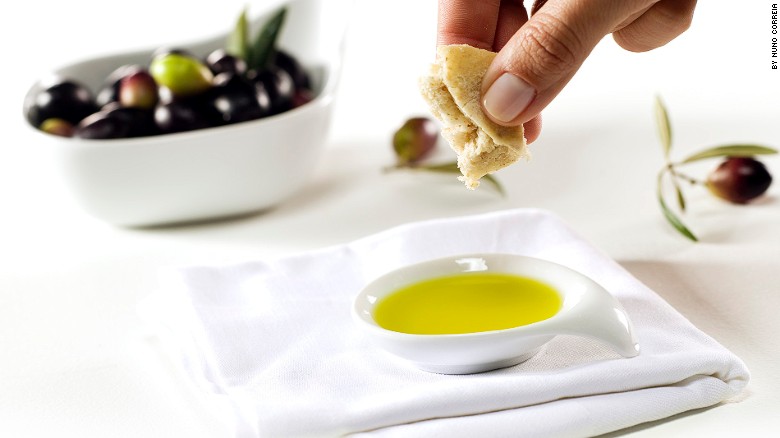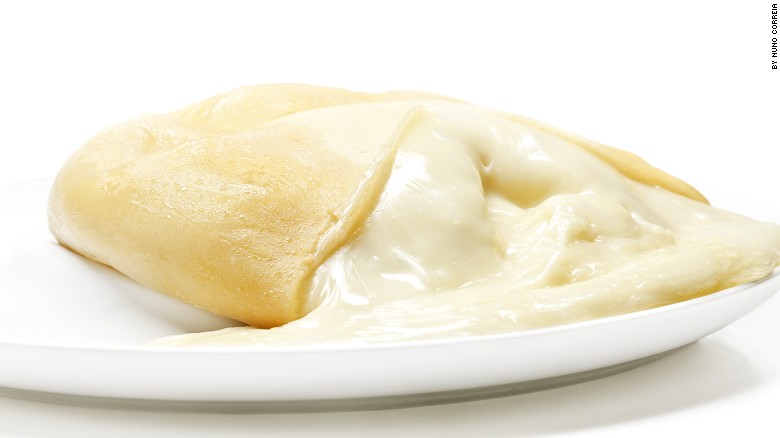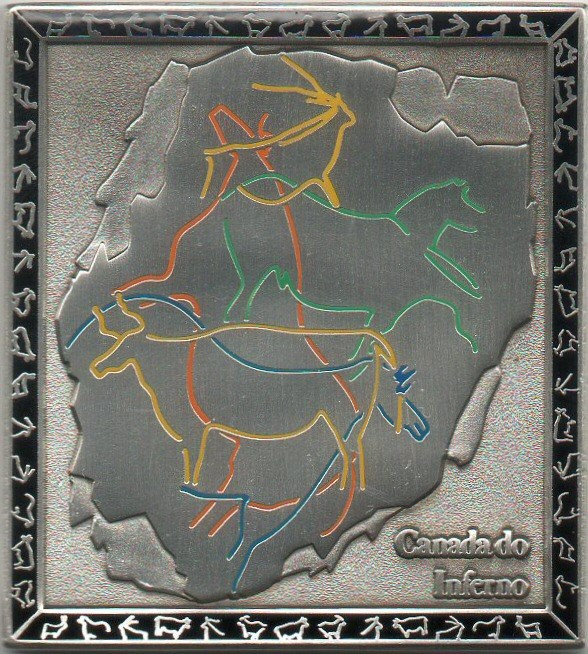Parece-me que os portugueses em geral têm uma alimentação mais diversificada e saudável que os espanhóis, talvez isto explique o facto de termos tantos centenários, contudo isto infelizmente vai mudar pois a urbanização da população trouxe as doenças civilizacionais. Tive um professor que ainda se recorda dos tempos em que não havia casos de doença de Crohn num grande hospital do Porto.
Apesar da cruzada contra as gorduras que teve muito marketing à mistura sabemos hoje que o principal inimigo é o açúcar, e que um dos grandes problemas responsáveis pela inflamação crónica está na proporção de glicídeos que ingerimos, especialmente mono e dissacarídeos. Consumimos excesso de pães, bolos, batata, arroz e cereais de pequeno-almoço. Os nossos antepassados consumiam mais castanha, frutos secos e acima de tudo mais leguminosas, tudo alimentos com baixo índice glicémico. O próprio pão como base tradicional da alimentação tem muito que se lhe diga. Os nossos antepassados consumiam mais papas que pão, pois era um produto mais barato de se produzir e aproveitava a totalidade do grão. As papas também são um produto muito mais saudável. Isto não implica que devamos deixar de comer pão, é preciso no entanto saber escolher e optar pelos pães tradicionais que são produzidos apenas com farinha, água e sal, sem aditivos ou açúcares, e não abusar. A cruzada contra o glúten é apenas uma paranóia moderna para vender livros e ganhar dinheiro com palestras.
Interessante o que contas, depois vou abordar isso com mais atenção.
Portugal: Europe's best-kept foodie secret
By Paul Ames, for CNN
Updated 0901 GMT (1701 HKT) July 8, 2016
(CNN)Portuguese cuisine rarely travels well.
The cooking of mainland Europe's westernmost country is deeply rooted in the freshest local ingredients.
Superlative seafood, sun-ripened fruit, lamb raised on flower-speckled meadows, free-range pigs gorging on acorns beneath oak forests.
Without them, it just doesn't taste the same.
So while diners worldwide crowd Italian trattorias, French bistros and Spanish tapas bars, Portuguese restaurants abroad generally cater to melancholy emigrants seeking in vain to matar saudades (kill their longing) for mom's home-cooked food.
Things are changing.
The success of Portuguese chefs like George Mendes in New York and Nuno Mendes (no relation) in London is generating a global buzz about the cooking of their homeland.
Regular visitors have long been in on the secret, but here are 20 reasons why Portugal should be on
every foodie traveler's list.
1. Piscivore perfection
In Europe, only Icelanders eat more fish than the Portuguese.
Superstar chef Ferran Adria says seafood from Portugal's Atlantic waters is the world's best -- and he's Spanish.
Markets glimmer with a startling variety, from baby cuttlefish to U-boat-sized tuna.
If your food heaven is fresh seabass expertly barbequed with a hint of lemon, garlic and olive oil, this is the place.
Best eaten by the sea in restaurants like Sao Roque in Lagos, Restinga in Alvor,Furnas in Ericeira, Azenhas do Mar or Restaurante da Adraga west of Sintra,Ribamar in Sesimbra, or Doca do Cavacas on Madeira island.
2. Liquid gold
The basis of Portuguese gastronomy.
Drive the backroads of the Alentejo, Beira Interior and Tras-os-Montes regions and you'll weave through endless olive groves.
Olive oil is the basis of Portuguese cooking, whether it's used to slow-cook salt-cod, dribbled into soups or simply soaked up with hot-from-the-oven bread.
Exports have quadrupled over the past decade as the world wakes up to the quality of Portugal's liquid gold, either from big-time producers like Gallo and Oliveira da Serra, or hand-crafted, single-farm oils.
The latest prize: a gold medal for Olmais Organic oil at the
World's Best Olive Oils awards in New York.
3. The national boiled dinner
Portugal's cooking is rigorously regional: meaty and robust in the north, Mediterranean in the south.
Yet one dish unites the country: cozido.
Best eaten as a big family lunch, this is a boiled one-pot featuring a hunk of beef, various piggy bits, sometimes chicken, always cabbage, potatoes, carrots, turnips and an array of sausage, including paprika-spiced chourico and cumin-flavored blood pudding.
There are regional variations: in the Algarve they add chickpeas and mint; expect lamb and pumpkin in the Alentejo, sweet potatoes on Madeira.
In the Azores islands, cozido is slow-cooked by volcano in underground pits.
4. Lisbon's gourmet awakening
A new generation of chefs is shaking up the capital's restaurant scene with ultra-modern takes on gastronomic tradition.
Leading the charge is
Jose Avillez.
His
Belcanto restaurant facing the Sao Carlos theater won a second Michelin star in 2014.
Its menu features braised red mullet with liver sauce, clams and cornmeal; oxtail with foie gras, chickpeas and creamy sheep cheese.
Rivals include Henrique Sa Pessoa's new
Alma restaurant, just round the corner and wowing diners with the likes of hake with burnt leek and hazelnuts; or Joao Rodrigues, voted chef-of-the-year with his riverside
Feitoria.
Sa Pessoa and other celebrity chefs offer cheap and cheerful alternatives at the Ribeira market food hall.
Belcanto | Largo de Sao Carlos, 10 Chiado, Lisbon 1200-410 Portugal
5. King cod
They say Portugal has 365 recipes for cooking salt cod.
In fact there are many more.
Bacalhau is served "a bras" with scrambled eggs, olives and fries; as fish cakes (pasteis de bacalhau) alongside black-eyed-peas; barbequed, oven-baked or simply boiled with cabbage and carrots, then drizzled in olive oil.
Crumbled with cornbread in the university city of Coimbra, baked under mayonnaise Ze-do-Pipo-style in Porto, chopped into a favorite Lisbon salad with chickpeas and onion, bacalhau is always close to the Portuguese soul.
It's available everywhere, but
Lisbon's Laurentina restaurant may just serve the best.
Restaurante Laurentina o Rei do Bacalhau | Avenida Conde Valbom, 71 A, Lisbon 1050-067 Portugal
6. Say Queijo
Relatively unknown, the melty Serra da Estrela cheese is made from ewes' milk.
Why Portugal's cheeses are not better known is a mystery.
True, amarelo da Beira Baixa -- a herby goat-and-sheep-milk mix, was judged the world's greatest in a tasting organized by Wine Spectator and Vanity Fair a few years back.
Yet creamy Serra da Estrela from the milk of ewes raised in Portugal's loftiest mountain range; hard, pungent cow's-milk cheeses made on the precipitous mid-Atlantic slopes of Sao Jorge island; or peppery Terrincho produced in remote Tras-os-Montes, remain largely unknown.
Such dairy delights may be served as appetizers or after a meal with red wine or port, sometimes accompanied with quince jam (marmelada).
7. Porto's tasty trinity
In the 15th century, patriotic Porto donated all its meat to Prince Henry the Navigator to feed his soldiers when they sailed off to do battle in Morocco.
Left with just offal, they concocted a dish which remains the city's signature: tripas a moda do Porto.
It's not for the faint-hearted: a stew of butter beans, calves' feet, pigs' ears and peppery chourico as well as the tripe -- the chewy white lining of cow's stomach.
Ever since, inhabitants of Portugal's second city have been known as tripeiros -- tripe-eaters.
Porto's other best-known dishes: slices of deep-fried octopus and monster meat sandwiches smothered in spicy sauce and named francesinhas -- or little French girls.
8. Going with the grain
The Portuguese are Europe's biggest rice-eaters, outpacing Spaniards and Italians, but while paella and risotto are globally ubiquitous, Portugal's arroz dishes are unjustly neglected.
Arroz de marisco is sumptuous: sloppy rice cooked in a garlicky, cilantro-infused tomato sauce fortified with a multitude of shellfish, which can include lobster, crab, clams and shrimp.
You can taste top-notch versions at Cantinho do Mar in seaside Praia da Vieira de Leiria;
O Faroleiro overlooking the spectacular Guincho beach in Cascais; or
Marisqueira Rui in Silves, the old Moorish capital of the Algarve.
Other classic rice dishes: arroz de pato, oven-baked with duck; arroz de cabidela, involving lots of chicken blood; and sweet, cinnamon-scented arroz doce for dessert.
Cantinho do Mar | Avenida Marginal 87 Praia da Vieira, Vieira de Leiria 2430 - 696 Portugal
9. Wild pigs
Portugal enjoys some of the world's juiciest pork and tastiest ham as a by-product of its thriving cork industry.
Semi-wild black pigs grow fat on a diet of acorns dropped by the forests of cork oaks across the southern Alentejo region.
The resultant porco preto is marbled with fat, filled with flavor.
Cured ham (presunto) made from these beasts -- especially from the border town of Barrancos -- rivals the best from Spain or Italy.
The Alentejo's most distinctive dish combines clams with garlic-and-red-pepper-marinated pork.
10. The old school
Just about every provincial town has a least one old-school restaurant cooking time-honored dishes unique to their region.
Examples: Porto Santana serving vinegary dogfish soup in the whitewashed town of Alcacer do Sal; Cafe Correia famed for stuffed squid in Vila do Bispo; Aveiro's O Telheiro and its eel stew; the
Solar Bragancano whose seasonal partridge, pheasant and boar dishes make a trip to Braganca worthwhile.
Portuguese towns also have a bunch of informal restaurant categories: tascas are wine taverns serving hearty lunches; cervejarias are for seafood and chilled beer; pastelarias are nominally pastry shops, but also serve lunchtime dishes.
http://edition.cnn.com/2016/07/08/foodanddrink/portugal-food/

















